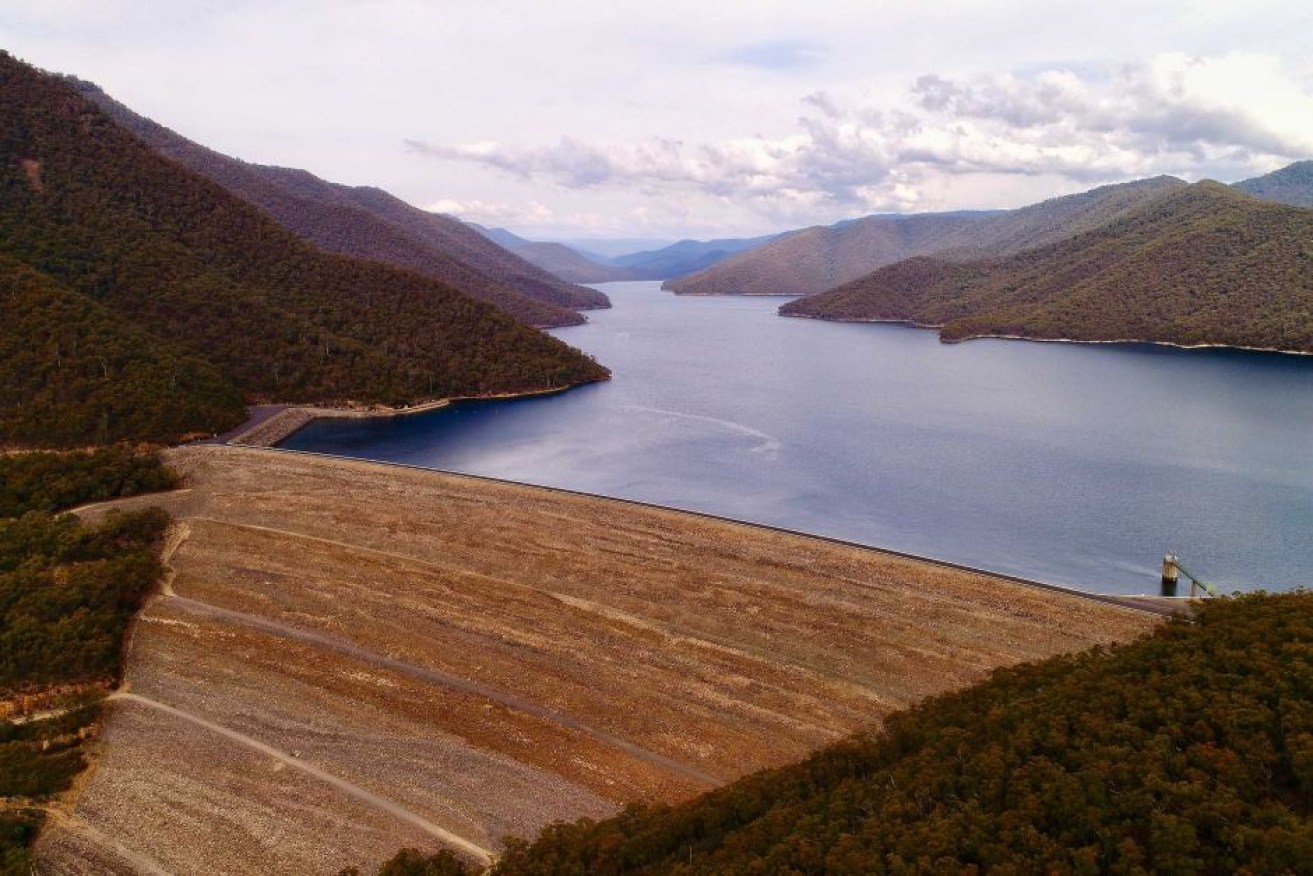Latest Snowy Hydro 2.0 environment report criticised by conservationists

Snowy 2.0 will pump water underground between Talbingo and Tantagara dams. Photo: ABC News
Conservation groups say the latest environmental impact statement (EIS) for the federal government’s Snowy 2.0 project shows work on the site will have dire consequences for land around it.
Exploratory works for the $5 billion hydro power project are already under way and the EIS for the main works is on public display until early November.
One of the main concerns is the proposal to clear an area in the Kosciuszko National Park.
The EIS states the “disturbance footprint” of the project is 1680 hectares, around 0.25 per cent of Kosciuszko National Park.
The “operational footprint” is smaller, at 99 hectares or 0.01 per cent of the total national park.
Executive officer of the National Parks Association Gary Dunnett said this was “the largest … most destructive development in a national park ever”.
“It’s somewhat disingenuous to keep talking about a small percentage of what’s one of the very largest national parks in NSW,” Mr Dunnett said.
“To put it in context, that’s the equivalent of saying that we’re going to clear fell all of Sydney Harbour National Park, plus all of Lane Cove National Park, plus all of Kamay-Botany Bay National Park, plus all of Georges River National Park, plus Towra Point Nature Reserve, and a sprinkling of smaller nature reserves.
“What’s been revealed last week through the main work’s EIS is in fact even worse than our worst imaginings for this project.”
Short-term impacts defended
Most clearing will be required for the construction phase of the project and is temporary, and the parent company in charge of the project, Snowy Hydro, has said it will rehabilitate sites once they are no longer needed.
Snowy Hydro manager of water and environment Andrew Nolan said concerns about environmental impacts were fair, but most of the project was underground or using already disturbed sites.
“We firmly believe that given our long track record of existing and operating in the national park now for many decades, and the inherent design of the project, we can balance those short-term construction impacts with the much broader benefits the project brings,” he said.
“We’re confident we’ll be able to leave it in a better state than how we’re finding it today.”

It is expected Snowy 2.0 will unearth up to 9 million cubic metres of excavated rock from tunnels. Some will be placed in the Tantangara and Talbingo reservoirs. Photo: ABC News
Snowy Valleys Council Mayor James Hayes said, while the clearing required was a concern, he believed the environmental safeguards would be “far stricter” than they were in the 1960s when the original Snowy Hydro was built.
“I’d say there are a few greater concerns in the national park that need immediate attention,” Mr Hayes said.
“I would say that that would be weeds and feral animals, and I would say unless that’s addressed you’re clutching at straws with just a few square kilometres of degradation compared to thousands of square kilometres being ravaged by introduced species.”
He said community support for the project was strong.
“People still talk with pride that their parents or their grandparents worked on the Snowy scheme … there’s so much pride in the fact they were involved with this project and I would envisage that 2.0 will evoke similar passions with the people who work there, and the people associated with those workers,” Mr Hayes said.

Snowy Valleys Council Mayor James Hayes thinks the environmental damage in Kosciuszko National Park from Snowy 2.0 will be minor. Photo: Glen Sanders
‘Death by a thousand EISs’
The document outlines the expected impacts of the main works of the Snowy 2.0 project, but does not include the transmission lines.
At least an additional two EISs are expected: One for the concrete tunnel linings for the main works and another to accompany the application for the proposed underground power station.
The National Parks Association of NSW and the Colong Foundation have criticised the approach of developing multiple statements.
“We’ve had this little drip feed, this death by a thousand EISs approach, where we haven’t been given a full picture of the total impacts of this proposal,” Mr Dunnett said.

Another two environmental impact statements will be released before the project goes ahead. Photo: ABC News
Colong Foundation director Keith Muir said the multiple documents were allowing Snowy Hydro to rush the project.
“What we have now is a new main works project, which will see the loss of 1600 hectares of national park,” Mr Muir said.
“Some of that loss will be put under waste rock, replacing picnic grounds with waste rock at Lob’s Hole. We’ve got the draining of streams in the national park, streams, and rivers that will become ephemeral as a result of this project.”
“It’s a huge project and yet it’s being rushed in a staged fashion so we can’t get a grip on the whole business.”
A spokeswoman for Snowy 2.0 said under the NSW Department of Planning, Industry and Environment regulation for state-significant infrastructure, multiple EISs can be exhibited.
The EIS is available for comment until November 6.
–ABC








